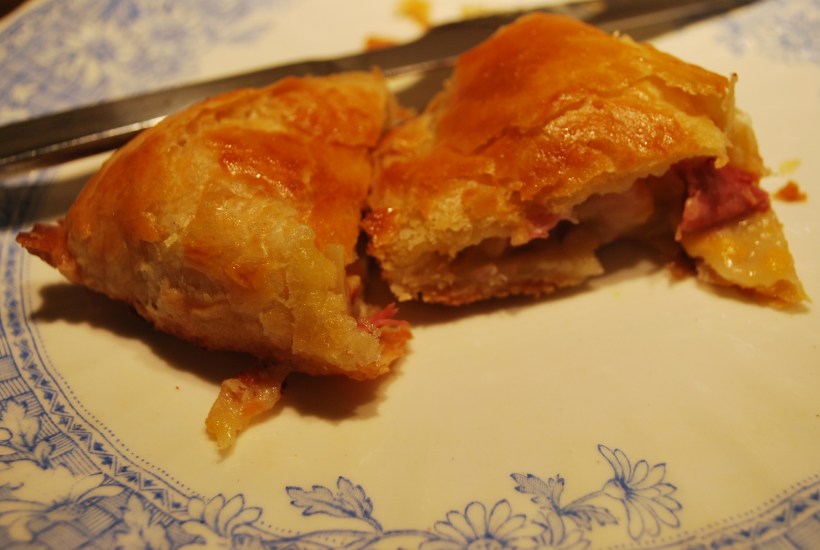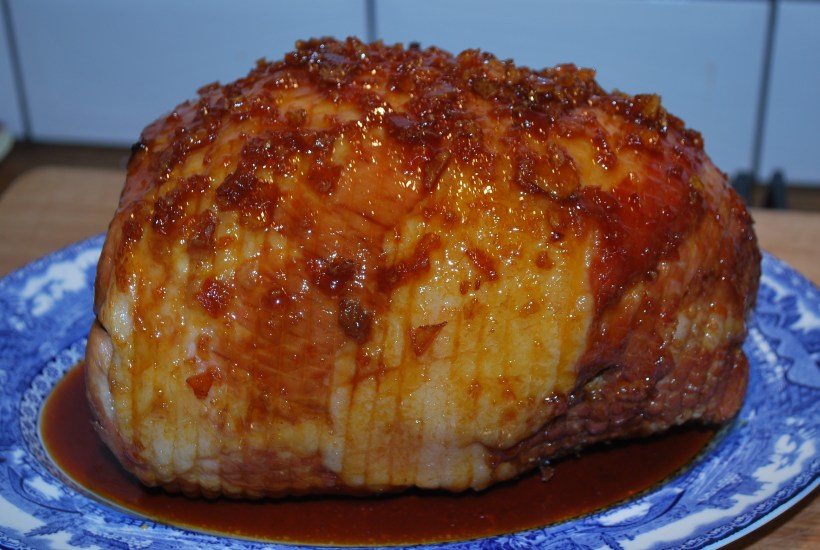Finally, back to the cooking. An easy recipe which looks like you´ve put lots of effort in and hours of work! This would also work well with pork loin or chicken breast.
You´ll need for 2 people (with leftovers which is always a good thing)
- 1 pork fillet
- A sprig of rosemary (discard after cooking)
- About 10 mushrooms thinly sliced
- 2 rashers of bacon finely chopped
- ½ a medium onion finely chopped
- 2 cloves of crushed garlic
- Small glass of dry white wine or sherry
- Seasoning
- Olive Oil
- Set the oven to about 180ºC (medium)
Put the pork fillet on a sheet of aluminium and rub in about 2 tablespoons of olive oil, and season all over with pepper and salt. Tuck the rosemary spring under the meat and bring the aluminium up to create a basket for the meat, but don´t cover it completely. This basket will save the cooking juices.
Put the meat onto a baking tray and into the oven and cook for about 30-40 minutes until the juices run clear when you put a skewer into the thickest part. Remove from the oven, remove the rosemary, wrap the foil tightly round it and keep it warm for about 5 minutes to let it rest a little.
While the meat is cooking, put a few tablespoons of oil into a deep frying pan and cook the onion, garlic and bacon together gently until the onions are soft. Add the mushrooms and a grind of pepper, stir over the heat until the mushrooms have all absorbed a little oil then add the wine and a few grinds of black pepper (no salt usually needed because of the saltiness of the bacon). Put a lid on the pan and simmer gently for about 10 minutes or until the mushrooms are cooked and the liquid has reduced by about half.
 Now pour in the meat juices and stir in. At this point you could add a dash of cream if you fancy a creamy sauce. Slice the meat and either pour the bacon and mushroom sauce over or serve separately.
Now pour in the meat juices and stir in. At this point you could add a dash of cream if you fancy a creamy sauce. Slice the meat and either pour the bacon and mushroom sauce over or serve separately.
Any leftovers of meat can be finely chopped, mixed with the mushrooms and bacon with a little cream and are delicious on pasta!
Apologies to my veggie pals and readers (you know who you are 🙂 ) this is an unashamedly porky plate with little room for adaptation but I hope you will understand and forgive….











